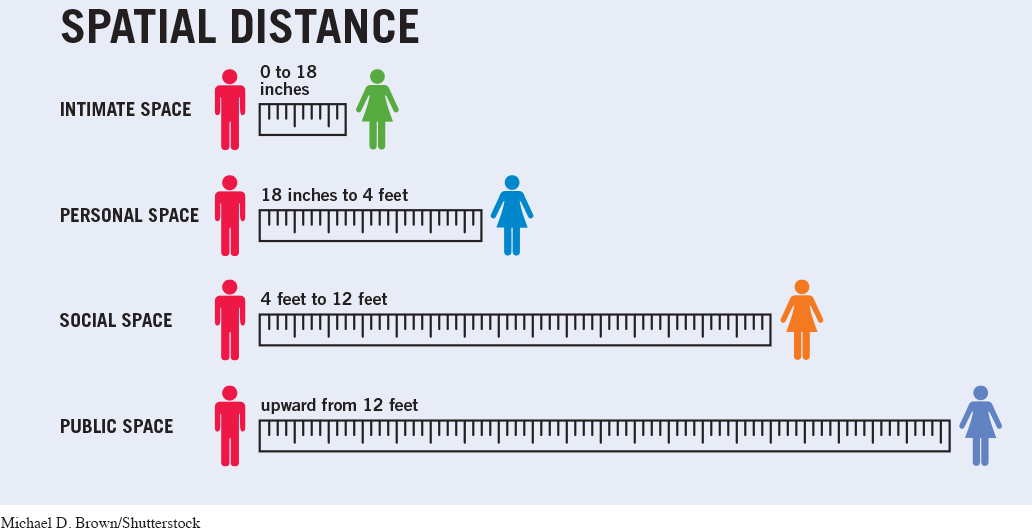Personal Space
How close or far away you position yourself from others while communicating is known as proxemics, from the Latin word proximus, meaning “near.” Proxemics often illustrates the nature of the encounter and how you feel about the people with whom you’re interacting. There are four different zones for physical distance (see Figure 6.2), and each is used in specific kinds of settings (E. T. Hall, 1963):
Intimate space ranges from 0 to 18 inches. Most people use this only with people to whom they feel extremely close.
Personal space ranges from 18 inches to 4 feet and is often used during encounters with friends.
Social space ranges from about 4 feet to 12 feet. Many people use it when communicating in the workplace or with acquaintances and strangers.
Public space ranges upward from 12 feet—
including great distances— and is used during formal occasions, such as public speeches or college lectures.

Of course, these distances aren’t absolute; different people have different preferences for space. You may feel crowded if people sit closer than two feet from you, whereas your best friend may be perfectly comfortable sitting shoulder-